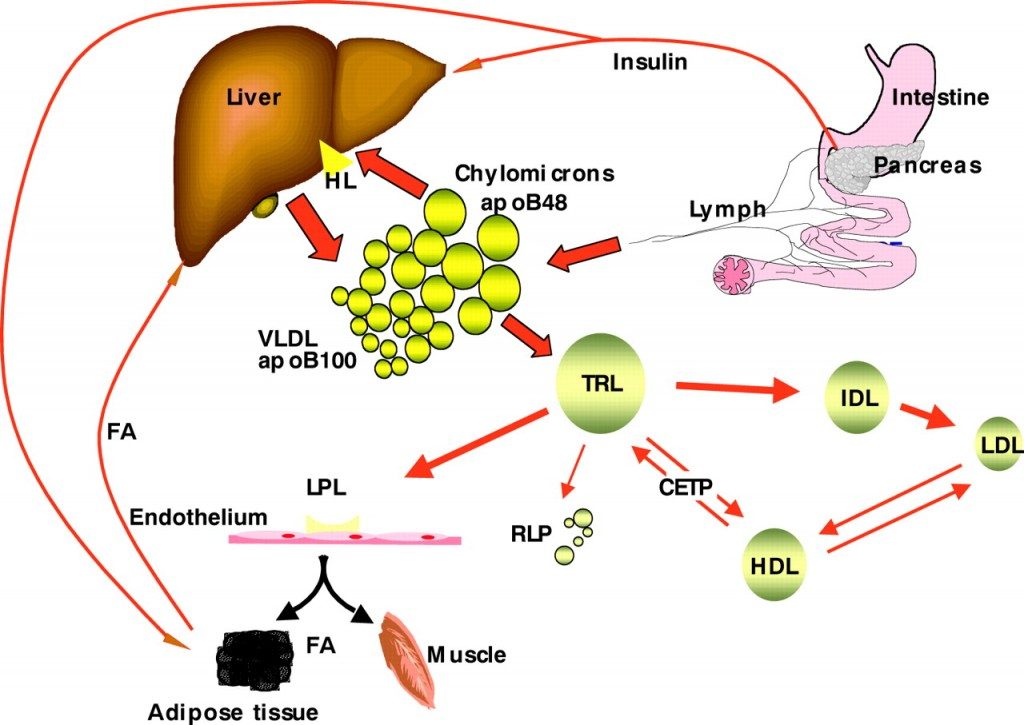
You, your diet and high triglycerides
 You, your diet and high triglycerides
You, your diet and high triglycerides
You know what it means when your blood test results come back with your total cholesterol, LDL (“bad”) and HDL (“good”) cholesterol numbers. What about the number for triglycerides? What does it mean for your health?
Often an elevated triglyceride goes hand in hand with a low HDL “good” cholesterol level and may increase the risk of heart disease. Generally, anything you do to lower triglycerides likely will increase the protective HDL cholesterol.
Serum triglycerides come from foods and your liver. The food sources are simple carbohydrates, fats you eat and alcohol you drink. Your body transforms simple carbohydrates into glucose for energy, with excess glucose stored as glycogen in your muscles. Once you’ve reached your capacity of glycogen, the liver converts the excess into triglycerides and stores some of it as fat.
If you consume a high-fat meal, your intestines will package some of the fats and transport them to the liver. The liver will bundle them as triglycerides and send them to your body to use as fuel. Much of this excess triglyceride is stored on your body as fat.
Herein lies the problem. Some triglycerides will not be stored as fat and remain in your blood stream. This over abundance thickens your blood. Your blood becomes sludgy, increasing the possibility of clotting and blockage, possibly leading to a heart attack or stroke.
Certain diseases can cause the liver to produce too much triglyceride and make the problem worse. These include diabetes, hypothyroidism, kidney and liver disease, alcoholism and lupus.
Blood triglyceride levels can be measured. Most agree an optimal number for your triglycerides would be anything less than 150.
Diet is the first line of treatment. Sugar, simple carbohydrates and alcohol have the greatest influence on triglycerides. If you have high triglycerides, you may be able to lower them by reducing simple sugars and carbohydrates and limiting alcohol intake. Trans fats and saturated fats found in foods may also increase blood levels of triglycerides. Eat no more than 7 percent of calories from saturated fat. That translates to 12 grams of saturated fat for a 1500-calorie diet.
Anything that increases blood glucose potentially will increase triglycerides. Reduce the intake of sugar from soda, pastries, pies, cakes, syrup, sugar, candy, honey and high amounts of fruit juice and jelly. And don’t forget, alcohol is a strong contributor to high-triglyceride levels. Even a small amount of alcohol can increase triglycerides in some people.
Reduce “simple” carbohydrates like white bread, white pasta, white rice and white flour foods. Choose instead whole wheat breads and pasta, brown rice, barley, oats, beans, fruits and vegetables. Of course, weight reduction and regular exercise can also contribute to lowered triglycerides.
You should consider managing your triglyceride levels using the above techniques. If, after sincere efforts of proper diet, weight loss and other natural means your triglycerides remain elevated, you should consult with your physician.
Ruth Ann Clayton is the Registered Dietitian at Nature’s Way. Email her at natureswaymh@gmail.com . This information is not intended to diagnose, treat, or cure any disease.